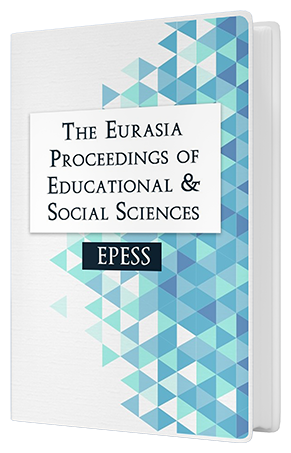EXAMINATION OF ADOLESCENTS’ COPING WAYS WITH CYBERBULLYING
Keywords:
Coping with cyberbullying, adolescents, gender, facebook membershipAbstract
With the rapid development in information and communication technologies, increase in quality and quantity of various tools that are compatible with Internet also augments interpersonal communication and interaction opportunities on the Internet. This increase in interpersonal communication and interaction on virtual platforms, however, brings a set of problems along, too. One of these problems is the use of the virtual platform technologies by the young to bully (cyberbullying) their peers. Considering 12 to 20 years of adolescents, being the most engaged people with virtual platforms, and who are called the digital natives; ascertaining adolescents’ coping ways with cyberbullying is thought to be important. The purpose of this study is to examine 9th, 10th, 11th and 12th grades high-school adolescents’ coping ways with cyberbullying on the basis of gender, high-school type and Facebook membership variables. Survey model was used as the research method. The study was conducted with 301 adolescents from two different high-schools in a city in the centre of Turkey. “Coping with Cyberbullying Scale towards Adolescents” consisting of 17 items and 4 subscales was used to obtain research data. Findings obtained from the research show that adolescents’ coping ways with cyberbullying are generally elevated. Additionally, while there is a significant difference in favour of female adolescents in coping ways with cyberbullying in terms of gender; there is, on the other hand, a significant difference in favour of adolescents studying from public high-schools in terms of school type. Finally, coping ways with cyberbullying according to whether the adolescents are members of Facebook, differentiated on a significant level in favour of the ones that are not members of Facebook.Downloads
Published
Issue
Section
License
Copyright (c) 2016 The Eurasia Proceedings of Educational and Social Sciences

This work is licensed under a Creative Commons Attribution-NonCommercial-ShareAlike 4.0 International License.
The articles may be used for research, teaching, and private study purposes. Any substantial or systematic reproduction, redistribution, reselling, loan, sub-licensing, systematic supply, or distribution in any form to anyone is expressly forbidden. Authors alone are responsible for the contents of their articles. The journal owns the copyright of the articles. The publisher shall not be liable for any loss, actions, claims, proceedings, demand, or costs or damages whatsoever or howsoever caused arising directly or indirectly in connection with or arising out of the use of the research material. All authors are requested to disclose any actual or potential conflict of interest including any financial, personal or other relationships with other people or organizations regarding the submitted work.




